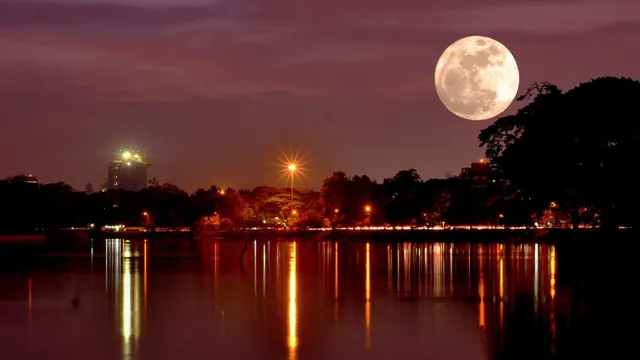- By Shivangi Sharma
- Wed, 05 Nov 2025 05:50 PM (IST)
- Source:JND
November Supermoon 2025: Skywatchers are in for a treat this month as the third supermoon of 2025 lights up the night sky. November’s full moon, known traditionally as the Beaver Moon, is expected to be the closest the lunar surface has been to Earth in six years, making it appear significantly larger and brighter than usual. This dazzling event is the second in a rare sequence of three consecutive supermoons occurring this year.
A supermoon occurs when the full moon phase aligns with perigee, the point in the moon’s elliptical orbit where it is closest to Earth. During this event, astronomers estimate the moon will be about 27,000 kilometres closer to our planet than average. This proximity will make the moon appear roughly 7 per cent larger and nearly 16 per cent brighter than a typical full moon, a noticeable difference for sky enthusiasts.
This particular supermoon will approach Earth at a distance of approximately 356,800 kilometres, compared to its usual 384,400 kilometres. Experts say this is the closest we’ve seen the moon appear in nearly nine years, and we won’t witness another lunar spectacle this bright until November 2026.
Why It's Called The Beaver Moon
November’s full moon has historically been referred to as the Beaver Moon in North American folklore. The name marks the season when beavers retreat into their lodges in preparation for winter, and when trappers traditionally set their final traps for thick winter fur.
When And Where To Watch
The Beaver Moon will rise in the east at dusk on Wednesday, November 5, and remain visible throughout the night. For the most dramatic view, astronomers recommend watching 30 minutes after sunset, when the moon hangs low on the horizon and appears even larger due to the “moon illusion.”
By 9 pm, the moon will climb higher into the southeastern sky, offering clearer views for photography and telescope users.
A Planetary Bonus: Spot Saturn Too
As the moon brightens the sky, look slightly to the right to find a bright point of light, that’s Saturn, shining prominently and visible to the naked eye from nightfall until dawn. By late evening, the moon and Saturn will form a stunning duo in the southern sky.
ALSO READ: No, Zohran Mamdani Isn't The Only Indian-Origin Winner In US Elections, Meet The Other Two Victors
With perfect timing, rare proximity, and cosmic companions, this “super” supermoon promises one of the most memorable celestial shows of the decade. Whether you’re a casual observer or a seasoned stargazer, make time to look up, you won’t see the moon this big again until next year.

